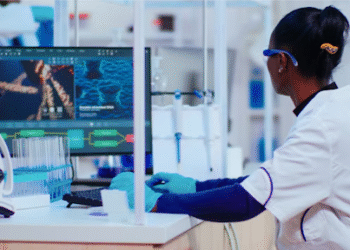Every home produces garbage packaging food leftovers and damaged goods; it all adds up. A cleaner environment depends on careful handling of this waste. Municipal trash is still increasing every year in the UK; thus wise disposal is now more crucial than ever. Companies such as skip hire cheadle are very productive when it comes to waste management. They simplify the process of dealing with huge amounts of rubbish. Be it residential clearance or commercial projects skip hire facilitates waste to be managed in an improved manner. Whether its a commercial project or a house clearout skip hire helps improve waste management. The larger picture also includes recycling. It’s about providing materials a second life not just getting rid of garbage. In this article we will be investigating how much of the UKs municipal trash is recycled and how it is handled efficiently.
What Counts as Municipal Waste?
Every day trash from residences schools and some small businesses makes up municipal waste. It includes furniture garden refuse paper plastics, and food waste. Most of it is gathered by local councils via household bins recycling facilities and bulky waste pickup services. This kind of trash differs from hazardous or industrial waste. It concentrates on what everyday people discard every day. Maintaining cities clean and lowering environmental impact depends on good governance. Much of this garbage may be recycled or reused if arranged properly.
How Much Municipal Waste Does the UK Produce?
Annually millions of tonnes of municipal trash are created in the United Kingdom. Official governmental estimates put the total reached about 27 million tonnes in a recent year. Because of its larger population England makes up the largest share. Though contributions are modest Scotland Wales and Northern Ireland still face meet same difficulties. Holiday seasons purchasing trends and life patterns tend to increase waste levels. Rising online shopping and more deliveries also generate more packaging waste. Waste production is still high even in despite public awareness campaigns. Sustainable life depends on good waste management.
Gaps and Advancements
Although recycling has improved development is slower than expected. Though it differs by region the average recycling rate in the UK is around 45%. At more than 60% Wales leads; England and Scotland follow a little behind. Northern Ireland also does admirably, albeit not always. By 2020 the administration had targeted 50% recycling. While some regions attained the goal others did not. Low participation policy discrepancies and pollution impede swifter advancement. Still recycling enjoys great public support.
What Materials Get Recycled Most?
At the top of the list are cardboard and paper. They are simple to handle and very tolerant. High recycling rates are also found in metal garden trash and glass. On the other hand plastic offers a challenge. It can be recycled only if sorted appropriately. Different kinds of plastic call for different techniques. Confusion inside the home causes reduced success rates. Another area of increasing interest is food waste. Many councils now have dedicated food bins. Food trash decomposes into compost or energy via anaerobic digestion when recycled. Every recycled item lowers landfill garbage and reduces the resources consumed.
Role of Local Councils
Managing municipal waste depends much on local councils which offer recycling education bins and collection schedules. Household participation is just as important though. Recycling initiatives fail if locals do not segregate garbage appropriately. Little activities like washing containers composting at home or using food caddies have a significant effect. While some councils use punishments for recurrent contamination others provide prizes or points for recycling. Success depends on clear communication and public collaboration. Working hand in hand local governments and councils may significantly increase recycling and lower waste.
Smart Ideas For Trash
Though there is room to improve the UK has good trash management foundations. Future targets include dropping landfill consumption below 10% and reaching 65% recycling by 2035. Better infrastructure is needed to reach there; more sorting plants more precise labels and digital trash tracking can assist. New legislation such as the Extended Producer Responsibility (EPR) will also drive companies to create environmentally friendly packaging. Public awareness programs keep educating people. Reducing garbage reusing more and making sustainable decisions are the easy messages. What we do today determines the course of a cleaner more environmentally friendly future.
Conclusion
Yearly the UK produces a great deal of garbage from households. Though recycling rates have increased there still needs to be more progress made. Everyone is important. From families and councils to companies and manufacturers collective effort counts. We safeguard the earth and inch toward a circular economy using better waste management increased recycling and lower discarded volume. Although garbage may be a component of everyday life and it doesn’t necessarily have to damage our planet if we have the right attitude.















